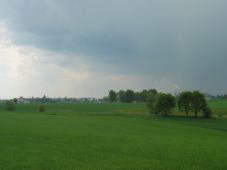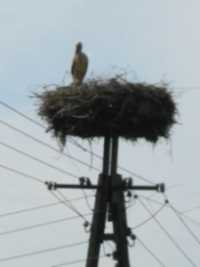GENERAL INFORMATION
The grounds of the District cover almost 1230 square kilometers. They were shaped by the last glaciation, so the landscape is dominated by moraine uplands including widespread flat and wavy plains with slight variations in altitude. The plains are cut by valleys of post-glacial gullies and melting hollows creating numerous and picturesque lakes and ponds.
The two main natural reserves are the 37-hectare Piwnicki Forest - one of the oldest Polish natural environment reserves (founded in 1924), as well as the “Rzeka Drwęca” salmonidae family fish reserve.
SAND DUNES
The Toruń District features one of the best formed inland dune complexes in Poland.
Often reaching a height of several meters and presently mostly forested, they are especially prevalent in the communes of Wielka Nieszawka and Czernikowo.
This advantageous landscape is complimented by the beauty of the Toruń Valley. Its slopes are very diverse in form and vegetation.
Rare and interesting features of the terrain are esker and drumlin embankments appearing in the vicinity of Chełmża, Czernikowo and Obrowo.
HYDROLOGY
From the hydrological perspective, the Toruń District is situated in the basin of the Wisła river. At this point, the river’s average width is 400-500 m and the depth reaches 3-5 m. The flow is variable, so in spite of water management measures, navigation is limited and there is a frequent threat of flooding.
LAKES
There are 21 lakes within the Toruń District. They vary considerably in size and depth. The biggest of these is Lake Chełmżyńskie. It is over 6 kilometers long, over 600 meters wide and up to 30 meters deep. Complicated in shape, this lake extends over 2.8 square kilometers. The other big lakes in the area are Grodno and Kamionkowskie. All of these offer excellent recreational opportunities for camping and water sports. Located to the north-west of the aforementioned lakes is the Pojezierze Dobrzyńskie Lake District. It features a cluster of smaller, but truly beautiful lakes. These include Głuchowskie, Dźwierzyńskie, Steklińskie, Kijaszkowo, Wielickie, Liciszewy and Zacisze. Especially well-regarded are the lakes of Czernikowo commune. Lakes Osiek, Dzikowo, Józefowo and Górsk are also very pretty. The quality and clarity of the river and lake waters in the District is good and is improving every year.
CLIMATE
The District has what can be termed as a transitional climate. Clashes between continental and oceanic air masses cause frequent weather changes and result in cloudiness, fog and various forms of precipitation. On the other hand, the nearness of the Wisła river makes average temperatures higher than in the surrounding uplands. This climatic influence extends to the neighboring areas. The average annual temperature is +7.9 degrees Celsius, with summer temperatures reaching an average of +18.1 and winter temperatures dropping to a level of -2.6 degrees Celsius.
Average annual rainfall amounts to 550-600 mm. The duration of the average growing season is 220 days – lasting from early April till early October.
FLORA
The rich and diverse vegetation of the area is due to different microclimates and soil conditions. Most landscape features are represented somewhere within the Toruń District - meadows, swamps, forests, thickets, lakes, rivers and ponds. Each microenvironment supports its own living space for different species of plants and animals. The local forests are populated primarily by pines, but there are also spruce, birch and oak trees. The forest undergrowth consists mostly of juniper, hazel and hornbeam together with various kinds of moss, ferns and berries. Several species of plants and trees are under legal protection. Among others, these include charlock, esparto grass, common sundew, purple buttercup flowers, and club-moss.
FAUNA
There is an abundant variety of wildlife living in the forested areas of the Toruń District – with more than 1500 species of insects alone. The local waters are perfect spawning areas for trout and salmon. Amphibians include two species of newts, frogs and toads – all typical of Polish lowlands. Reptiles of the area include zigzag vipers, blind-worms, grass-snakes, sand lizards and viviparous lacertilians. There are also smooth snakes in the area. Birds are represented by almost 150 species. All species of woodpeckers and goshawks nest in the area, as do cuckoos, ducks, pheasants, grebes, herons, common terns, buzzards, and owls. As for mammals, both game animals (stag, roe-deer, wild boar and hare) and protected species (fallow deer and moose) are common within the Toruń District. Predators include primarily foxes, badgers, polecats, forest and domesticated martens, and occasionally ermines.
Wetlands are inhabited by otters and musk-rats. Local forests are also home to western hedgehogs, moles and shrews, as well as several species of bats.
NATURAL RESOURCES
There are several natural deposits within the District, primarily consisting of ceramic materials, peat, and lake chalk. Most of the deposits are located in the commune of Lubicz. Currently, geologists are searching for evidence of oil and natural gas deposits. The aquifer underlying the District provides an ample supply of water both for drinking and for industrial use. Mineral waters, especially saline varieties are also found here.
©2004 by Starostwo Powiatowe w Toruniu. All Rights Reserved. Reproduction in whole or in part without permission is prohibited.



